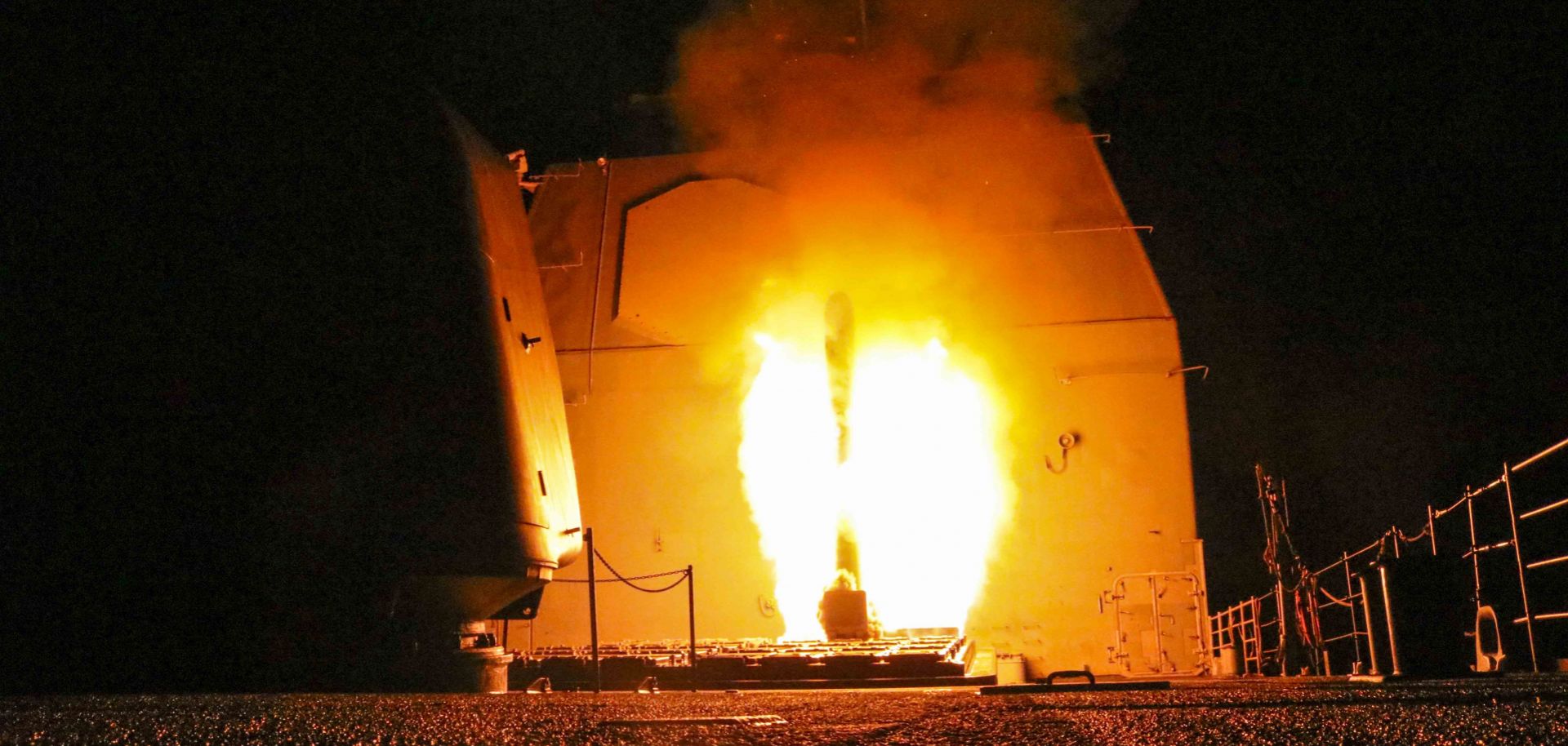ASSESSMENTS
The U.S. Will Find Few Takers in the Western Pacific for Its Missiles
Aug 21, 2019 | 09:00 GMT

The guided-missile cruiser USS Monterey fires a Tomahawk land attack missile on April 13, 2018, against the Syrian government. Washington could be set for a fruitless search to deploy its intermediate-range missiles against China in the western Pacific.
(U.S. NAVY/Lt. j.g MATTHEW DANIELS/Handout/Anadolu Agency/Getty Images)
Highlights
- The United States will continue its efforts to deploy land-based intermediate-range missiles in the western Pacific, including Japan and South Korea.
- China and Russia, however, will explore various avenues to dissuade regional U.S. allies from acceding to Washington's wishes.
- Overall, Washington will have few problems in deploying the missiles in places like Guam, but it will have a hard time convincing foreign allies to host them.
Subscribe Now
SubscribeAlready have an account?
